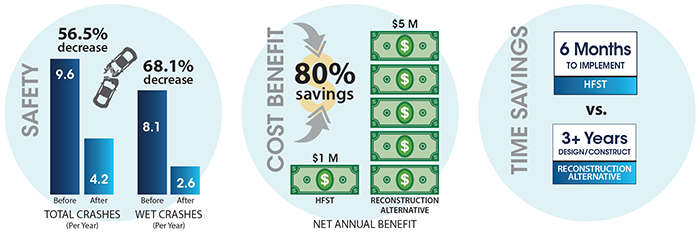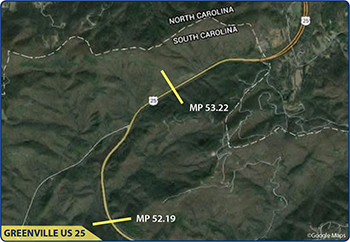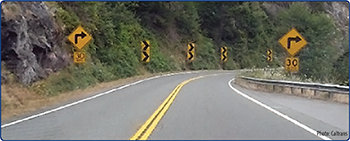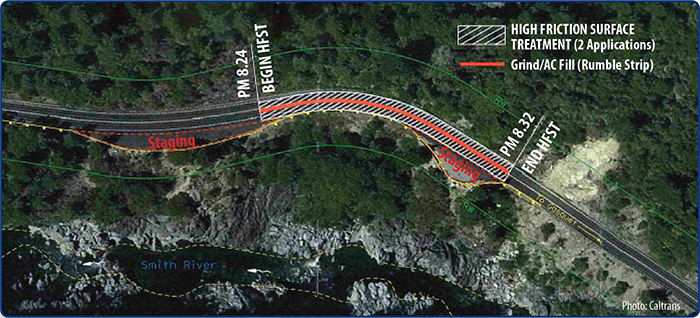New England States Set Tri-State Target
New Hampshire, Vermont, and Maine
Description
The American Association of State Highway and Transportation Officials (AASHTO) and seven other organizations representing roadway safety professionals in all the States have developed the Toward Zero Deaths (TZD) National Strategy to provide a roadmap of making sure every trip on our nation's highways is safe. The strategy focuses on all aspects of roadway safety, and emphasizes the importance of cooperation and collaboration.
At the same time, there was a growing national emphasis on evaluating and managing performance throughout the highway program. Both the Federal Highway Administration (FHWA) and AASHTO were encouraging states to be proactive in establishing and monitoring performance measures, and working together to improve critical areas such as safety.
“Highway safety partners know that their individual efforts are effective when they collaborate with each other, join forces to attack a particular problem or problem spot from multiple directions, and take advantage of each other's experiences and knowledge. This multidisciplinary approach is the basis of the Toward Zero Deaths National Strategy, as it has been with states' and various other organizations' strategic plans for improving highway safety. TZD is a vehicle to further unite safety stakeholders nationwide and focus on the core elements necessary to bring this shared safety vision to reality.”
- Toward Zero Deaths:
A National Strategy on Highway Safety
The Departments of Transportation (DOTs) in New Hampshire, Vermont, and Maine have a history of collaboration, which can be seen in their planning and operations, and their response to emergencies and other common problems. The three states share a geography, climate, history, culture, and roadway network that speak to their interconnectedness. Given this, it is not surprising that when the challenge was put forward to significantly reduce fatalities and serious injuries, the three States again focused on how they could support each other to achieve these goals.
On August 19, 2010, the three States signed the Tri State Agreement for Standardized Performance Measures Memorandum of Understanding (included in the appendix of the referenced 2013 report). In that memorandum, the three states commit to work together to establish a standardized set of performance measures and targets in safety and other priority areas. At the core of the Safety Performance Measures was the TZD program, which was just beginning to be embraced around the country. In that regard, this effort was not only unique in its multi-state scope, but also in taking such an early lead in adopting the TZD vision (nearly four years before AASHTO's formal adoption of the TZD National Strategy).
A Tri-State Safety Performance Measure Working Group was formed and provides an ongoing forum for the advancing the states' safety performance efforts. Although each state has its own challenges, they share six Critical Emphasis Areas (CEAs) in their Strategic Highway Safety Plans (SHSPs). These CEAs are focused on speed, safety belts, young drivers, impaired drivers, distracted drivers and intersections. As part of the tri-state initiative, New Hampshire, Maine, and Vermont continue to work collaboratively to coordinate programs to more effectively reach these regional goals. The following graph shows how this collective goal is represented in the Tri-State Performance Measures Annual Report for 2013.
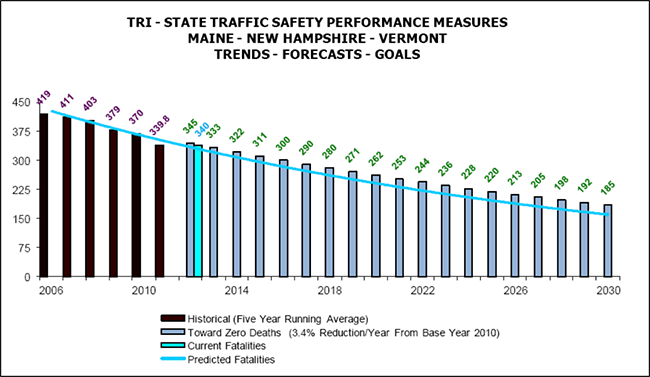
In addition, these three states have worked together with other New England DOTs to regularly share their safety experiences, programs and initiatives. For the past two years, Duane Brunell from MaineDOT has been hosting bi-monthly safety teleconferences which provide an open forum for the exchange of ideas. “We have talked about everything from addressing wrong-way drivers, to bike and pedestrian safety issues,” he notes. “Our states share many of the same safety problems and we continue to learn much from each other.”
Key Accomplishments
- New Hampshire, Vermont, and Maine built on their long standing relationship to adopt a common goal for their collective safety programs.
- Memorandum of Understanding signed by the heads of the three State DOTs to cooperatively develop common safety performance measures
- Early efforts to officially adopt goals and a vision reflecting what would become the Towards Zero Deaths National Strategy
Results
New Hampshire, Vermont, and Maine formally entered into the Tri-State partnership to work towards a common goal of significantly reducing fatalities and serious injuries. Through an on-going work group, the three states continue to focus on their efforts on common emphasis areas in their SHSPs. This has been reinforced through bi-monthy meetings to share experience and knowledge that has expanded beyond the original three States to include safety professionals from all the New England DOTs.
Contacts
Bruce Nyquist, P.E.
Highway Safety Manager
Vermont Agency of Transportation
(802) 828-2696
Fax: (802) 828-2437
Bruce.Nyquist@vermont.gov
Duane Brunell
Safety Manager
Maine Department of Transportation
16 Statehouse Station
Augusta, Maine 04333
(207) 624-3278
Duane.Burnell@maine.gov

